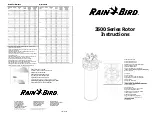
105
New Brunswick Scientific
User’s Guide
16.7.1 Lag
Phase
This initial phase is aptly named because it is the slow beginning of your
fermentation run, while the microbes become accustomed to their medium.
16.7.2 Exponential
Growth
Phase
After the initial lag, a sudden spurt in growth will indicate that the environment
is fully hospitable to the microbes. Compared to the nearly inanimate lag
phase, this activity will appear to be nearly uncontrolled.
16.7.3 Steady
State
Phase
Most of your run will be the desired steady state of growth. As long as the
temperature, pH, DO and other essential parameters are stable and you feed
your batch appropriately, this phase can last, for a standard e.coli fermentation,
for example, approximately 2-3 hours. Eventually, however, you must expect
your batch to decline.
16.7.4 Decline
Phase
This final phase is marked by a slow dying off. It is, of course, inevitable.
16.8 Batch
Operation
A batch operation is a closed growth environment in the sense that it contains a finite
amount of media. The inoculum grows through the various phases of fermentation
until it begins to decline and you harvest the desired product. It is easy to run and
yields results quickly.
16.9
Fed Batch Operation
A fed batch operation includes the addition of media to feed the batch fresh nutrient
and to dilute any build-up of toxic by-products in the broth, thereby extending the life
and growth of the desired product. Figure 63 on the following page is a simplified
depiction of this setup:
Summary of Contents for BioFlo 415
Page 12: ......
Page 129: ...117 New Brunswick Scientific User s Guide Figure 65a Controller Schematics left side ...
Page 130: ...118 BioFlo 415 y M1360 0050 User s Guide Figure 65a Controller Schematics right side ...
Page 145: ...133 New Brunswick Scientific User s Guide ...
Page 146: ...134 BioFlo 415 y M1360 0050 User s Guide ...
Page 147: ...135 New Brunswick Scientific User s Guide ...
Page 148: ...136 BioFlo 415 y M1360 0050 User s Guide ...
Page 149: ...137 New Brunswick Scientific User s Guide ...
Page 150: ...138 BioFlo 415 y M1360 0050 User s Guide ...
Page 151: ...139 New Brunswick Scientific User s Guide ...
Page 152: ...140 BioFlo 415 y M1360 0050 User s Guide ...
Page 153: ...141 New Brunswick Scientific User s Guide ...
Page 154: ...142 BioFlo 415 y M1360 0050 User s Guide ...
Page 155: ...143 New Brunswick Scientific User s Guide ...
Page 156: ...144 BioFlo 415 y M1360 0050 User s Guide ...
Page 157: ...145 New Brunswick Scientific User s Guide ...
















































